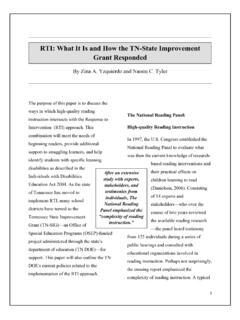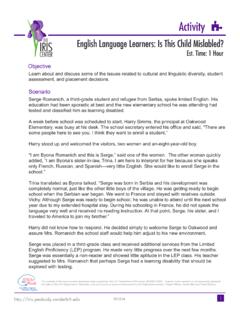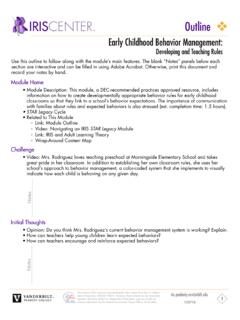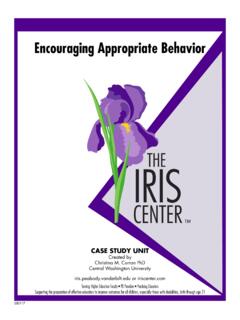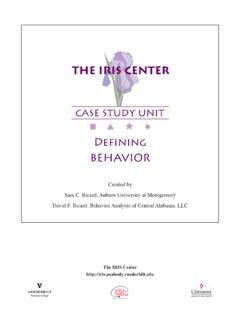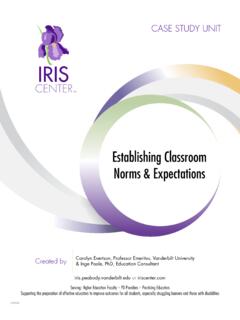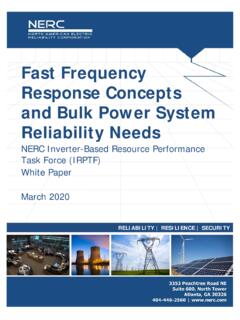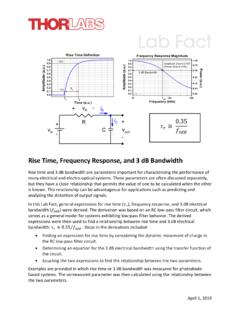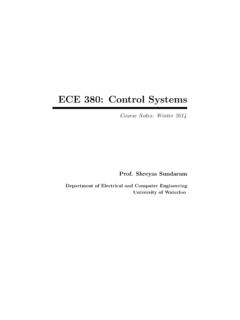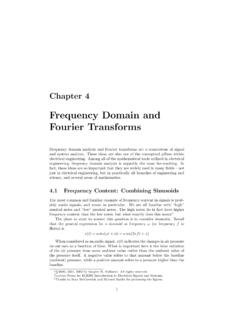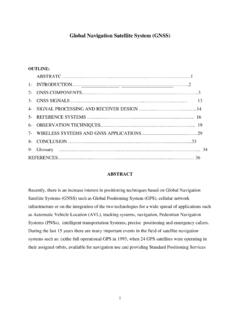Transcription of Behavior Assessment: Frequency and Interval Recording Est ...
1 Behavior Assessment: Frequency and Interval RecordingEst. time : 25 contents of this resource were developed under a grant from the Department of Education, #H325E170001. However, those contents do not necessarily represent the policy of the Department of Education, and you should not assume endorsement by the Federal Government. Project Officer, Sarah Allen . ActivityObjectiveGain experience collecting data using both Interval Recording and Frequency collecting data, educators can determine whether a student s Behavior is problematic and warrants intervention. Before they can do so, however, they must first operationally define the target Behavior , or the Behavior to be changed.
2 In an operational definition, a Behavior is explicitly or clearly defined such that it is measurable, can be identified by two or more observers, and can be identified across time and in different settings or contexts. Once educators operationally define the target Behavior , or the Behavior to be changed, they should choose a data collection system that provides the most accurate picture of the student s performance in the classroom. Two such methods are Frequency Recording and Interval (or event) Recording is a way to measure the number of times a Behavior occurs within a given period. Frequency Recording is best for behaviors with a distinct beginning and end.
3 To conduct an event or Frequency tally:1. Note the time the observation Record each occurrence of the Behavior . Teachers can easily do this by making a tally mark for each occurrence of the Record the time the observation ends. 4. Calculate the length of time for the Calculate the rate by counting the total number of times the Behavior occurred and dividing by the length of the : When using event Recording to assess academic skills, it is beneficial to count both correct responses (or desired Behavior ) and incorrect responses (or undesired Behavior ). You want to make sure incorrect responses are not increasing along with an increase in correct responsesTips for ImplementationFrequency Recording is an easy Recording method for teachers to utilize while teaching.
4 Besides using the data sheet provided, some other ways this can be done are as follows: Take data on a piece of masking tape attached to a shirt sleeve or pants, then put the tape directly on the data sheet after the observation. Put a handful of pennies, paper clips, or other markers in one pocket. Each time the Behavior occurs, move one marker to the other pocket. Count the number of markers moved during the observation session and record on the data Assessment: Frequency and Interval Recording2 ActivityInterval Recording documents whether a Behavior occurred during a particular period. There are two types of Interval Recording : whole Interval (an observer indicates whether the Behavior occurred for the entire time Interval ) and partial Interval (an observer indicates whether the Behavior occurred at any point during the time Interval ).
5 To record Interval data:1. Divide the observation period into equal intervals (usually between five and fifteen seconds long).2. At the end of each Interval , record whether or not the Behavior occurred. Note: For whole Interval Recording , the Behavior must occur for the entire Interval . For partial Interval Recording , the Behavior must occur during some portion of the After the session is over, count the number of intervals during which the Behavior Divide this number by the total number of intervals and multiply by 100 to determine the percentage of intervals during which the Behavior View the video at Use the attached event Recording form to record instances of the student s target Behavior , determining the Frequency and the View the video again and use the attached Interval Recording form to record this same Behavior .
6 Be sure to use the stopwatch when Recording your data. Also, a beep at each twenty-second Interval has been included to help with collecting the Interval Answer the following questions:a. What was the Frequency of the student s target Behavior ? b. Based on the Frequency Recording data, what was the rate of the student s target Behavior ?c. For what percentage of intervals did the student exhibit the target Behavior ?d. Compare the results of the Frequency Recording and the partial Interval Recording . Based on the data, do you think the student s Behavior is problematic? for Implementation Because it is difficult to collect duration data while teaching, ask another individual ( , teacher) to collect the data.
7 However, if you decide to collect the data, make the time Interval longer. To make this type of data collection easier, use a timer that signals the end of an Assessment: Frequency and Interval Recording3 ActivityFrequency Recording StartedTime EndedTallyLength of ObservationRateNote: The teacher starts the stopwatch at 10:30. Count verbalizations and sighs as separate Assessment: Frequency and Interval Recording4 ActivityIntervalCodeBehavior123456789101 112131415 Total intervals during which target Behavior occurred:Total intervals coded:Percentage of intervals during which target Behavior occurred:Partial Interval Recording Form

